What Does KVC Stand For?
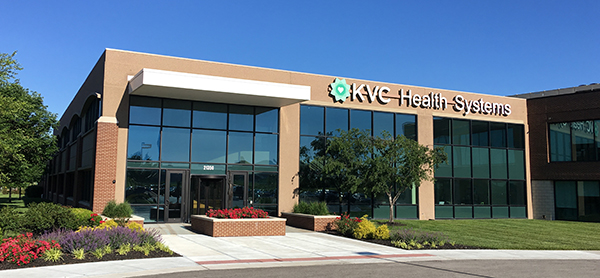
Have you ever wondered what the “KVC” in KVC Health Systems stands for? You’re not alone; it’s one of the most frequently asked questions we get.
Answering this question gives us a chance to tell you about our history and our future… both where we’ve been and where we’re going.
Do you believe every child deserves to be safe and connected to a strong family? Join us to receive a few inspiring stories each month and help end childhood adversity. Subscribe here!
The Original “KVC”
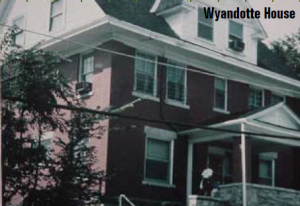 The organization that is now KVC Health Systems began in 1970 as a multi-story brick home in downtown Kansas City, Kansas called Wyandotte House. A group of caring women from the Junior League of Wyandotte and Johnson Counties created Wyandotte House because they saw children in need.
The organization that is now KVC Health Systems began in 1970 as a multi-story brick home in downtown Kansas City, Kansas called Wyandotte House. A group of caring women from the Junior League of Wyandotte and Johnson Counties created Wyandotte House because they saw children in need.
“I could see that there were kids being detained [at the Kaw View Detention Home] who didn’t belong,” said Ellen McCarthy, a founding mother of KVC. “They were good kids who were in detention because there was nowhere else for them to go.” (Notably, JoAnn Ball — a Junior League member at the time — and her family personally picked up the torch. Her children and grandchildren remain active in KVC’s leadership to this day.)
When Ellen became Junior League President, she had an opportunity to make a difference. She and three other Junior League members took out personal loans in order to buy a home. They created Wyandotte House, a home for boys. A married couple was hired to parent the boys sent to them by the courts. “Dad” went off to work each day. “Mom” stayed home and provided the stability the children so desperately needed. Besides providing a home for the adolescents, the “parents” were teaching the children what a healthy family life might look like.
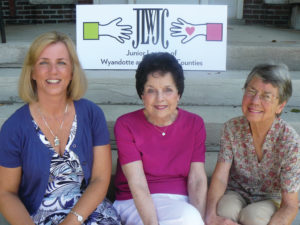
Gina McCord, Ellen McCarthy and Gail Anderson reminisce at the Junior League of Wyandotte and Johnson Counties
Wyandotte House grew and in 1994, the name was changed to Kaw Valley Center (yes – that’s what “KVC” originally meant). During the 1980-90s, KVC grew to represent one of the strongest child welfare and behavioral healthcare continuums of care in the nation, allowing KVC to meet the needs of any child and family requiring behavioral healthcare. KVC has emphasized research and education, drawing upon national experts and evidence-based practices to serve all children and families.
One thing that’s interesting is that, while KVC started as a small group home for boys, we’ve since learned that residential group home care is not the ideal living situation for most children. We know now that “Children grow best in families,” so we’ve helped the state of Kansas recruit and train thousands of relatives and foster families in order to support children in the context of a close-knit family. When we started providing foster care case management services in Kansas in 1996, 30% of children were in congregate care placements. 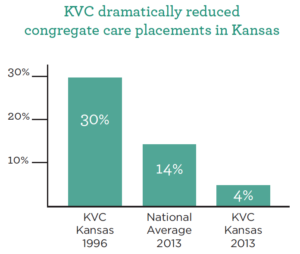 Today the national average is 14%, yet KVC’s rate is far better than the national average; less than 4% of children KVC serves in Kansas live in congregate care. Of those few that do live in a congregate/residential care setting, most are there for the specific purpose of receiving acute psychiatric treatment. (Learn more about our consulting on reducing congregate care and other national child welfare topics.)
Today the national average is 14%, yet KVC’s rate is far better than the national average; less than 4% of children KVC serves in Kansas live in congregate care. Of those few that do live in a congregate/residential care setting, most are there for the specific purpose of receiving acute psychiatric treatment. (Learn more about our consulting on reducing congregate care and other national child welfare topics.)
Check out this video about KVC’s history:
What KVC “stands for” today
The Kaw Valley is a particular region in the U.S. It refers to the land surrounding the Kansas River in northeastern Kansas, which is where KVC has its roots.
But today, KVC’s reach extends thousands of miles beyond the Kaw Valley. KVC serves children and families in five states (Kansas, Missouri, Nebraska, Kentucky and West Virginia). KVC’s work even extends beyond U.S. borders, as child welfare leaders from Canada, Singapore and other countries have requested consulting and training from KVC.
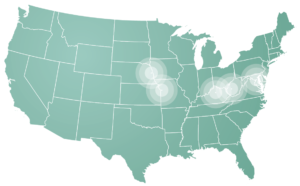 So in 2003, to bring our name in line with the scope of our work, Kaw Valley Center became simply KVC Behavioral Healthcare. A few years later, the parent organization KVC Health Systems was created, which has several subsidiaries such as KVC Kansas and KVC Hospitals that provide direct services to children and families.
So in 2003, to bring our name in line with the scope of our work, Kaw Valley Center became simply KVC Behavioral Healthcare. A few years later, the parent organization KVC Health Systems was created, which has several subsidiaries such as KVC Kansas and KVC Hospitals that provide direct services to children and families.
The letters in KVC are no longer an acronym, but they are still a useful guide to some of the values that make us unique and effective. These are the types of values that KVC “stands for” these days:
- Knowledge – We help children and families who have experienced trauma such as abuse, neglect, substance abuse and loss. It’s important that instead of offering help that we think will work, we do what we know will work: use treatment approaches that are rooted in research and validated by evidence.
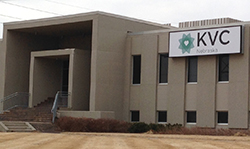
KVC Office in Omaha, Nebraska
Trauma Systems Therapy (TST) and Positive Behavioral Intervention and Supports (PBIS) are just two of the many evidence-based practices that make up the unique KVC Family-Centered Practice Model. Through the new KVC Institute for Health Systems Innovation, we are advancing research in the fields of child welfare and behavioral healthcare. Our goal is to expedite evidence-based practices into the real-world lives of children and families across the U.S. Knowledge is central to who we are, what we do, and how we make a measurable difference.
- Values – One way that KVC shapes its staff and culture is through the use of “KVCisms” or values. You’ve probably heard some of our values before such as, “What would you want for your child?,” “Excellence is not an act; it’s a habit,” and “There’s no magic answer down the street.” These values cause us to frame each decision with urgency and help us pursue each child’s best interests. Our performance on national child welfare outcomes helps validate that these values produce good results for children and families. Read more about our values.
- Connections – Having permanent, lasting relationships is vital for every human being, and it’s also vital for organizations. KVC believes in building both types of connections for health, strength and long-term wellbeing. At the individual level, we help children who have been removed from their homes by working to safely reunite them with their birth family or, if reunification is not possible, matching them with the right forever family through adoption. For the nearly 30,000 teenagers who emerge from foster care each year without a permanent family or home, KVC is leading a broadly-supported initiative to transform the vacated West Virginia University Institute of Technology in Montgomery, West Va. into a specialized career college for this at-risk population. At the organizational level, KVC works in tandem with other national experts to lead the fields of child welfare and behavioral healthcare. By having connections with other leading organizations including the Annie E. Casey Foundation, New York University’s Langone Medical Center, The Joint Commission, the University of Kansas, Child Trends, the Jim Casey Youth Opportunities Initiative, and hundreds more national, state and local partners, we can achieve much more than we might achieve alone. There is an African proverb that says, “If you want to go fast – go alone. If you want to go far – go together.” This sense of shared mission challenges and encourages us to dream and achieve in big ways.
KVC in 30 Seconds
So there you have it – KVC was once Kaw Valley Center, but the letters are now just a way to think about what drives us forward as an international leader in behavioral healthcare, child welfare, and community health and wellness: Knowledge, Values and Connections. Learn more about our leadership, direct services, consulting and training, research projects and more!
Still want to know more about KVC? Sign up to receive the latest news by subscribing to our newsletter (at bottom), and follow us on Facebook and Twitter!




